한국응용과학기술학회 논문 검색
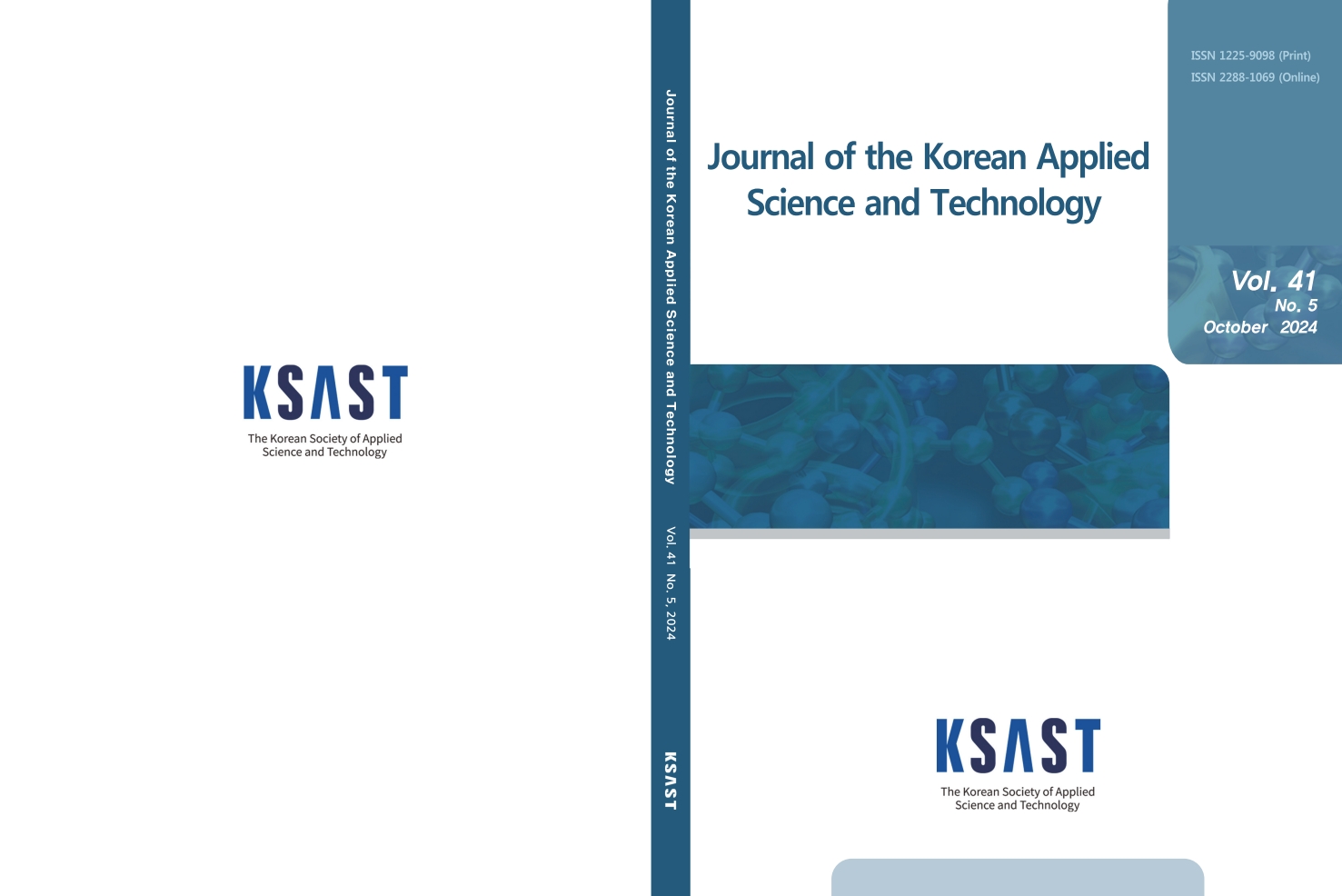
필라테스 지도자와 고객과의 라포형성(Rapport)이 장기적 관계 지향성에 미치는 영향 : 상호의존모형(APIM) 적용
간행물 정보 : Vol. 41 No. 5, 2024년,
파일형식 : pdf

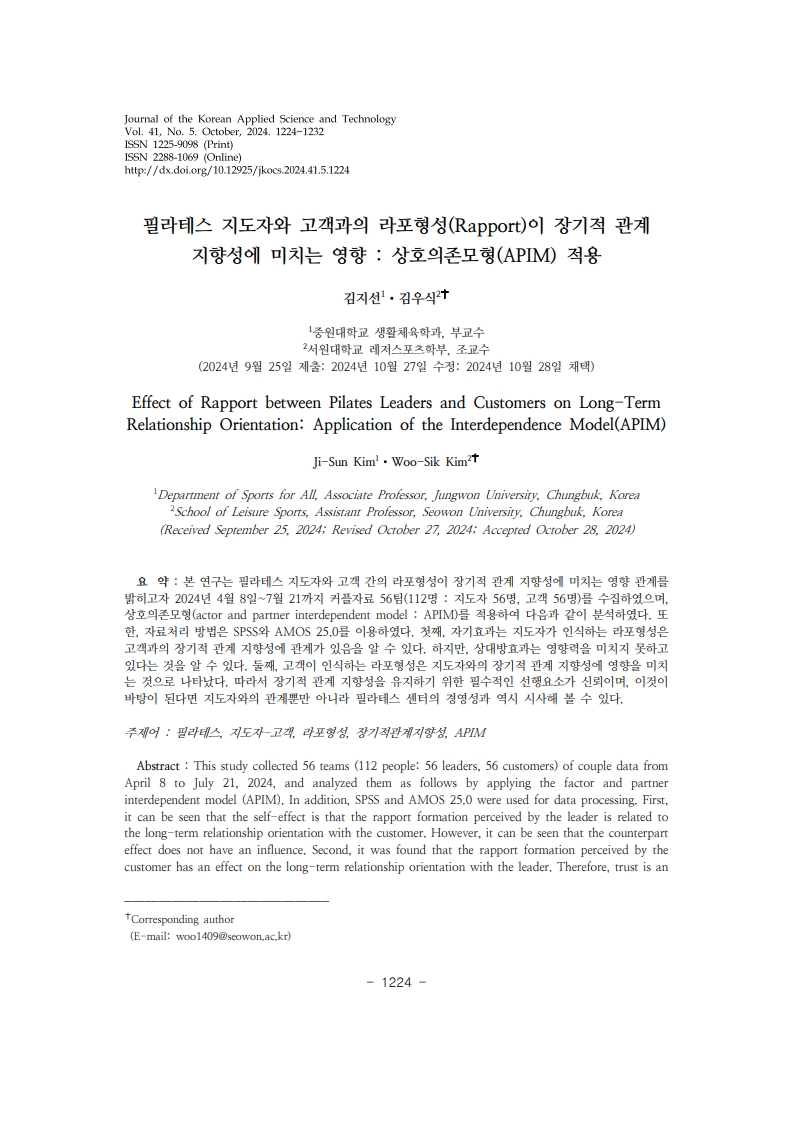

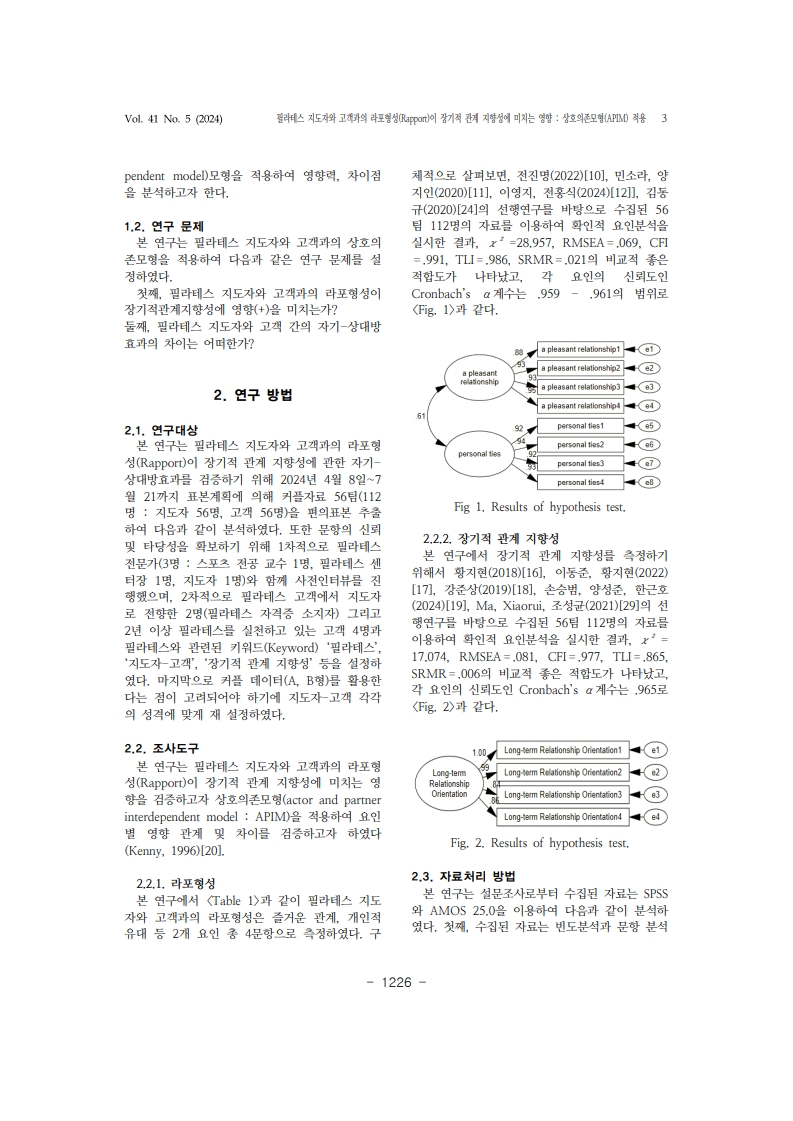

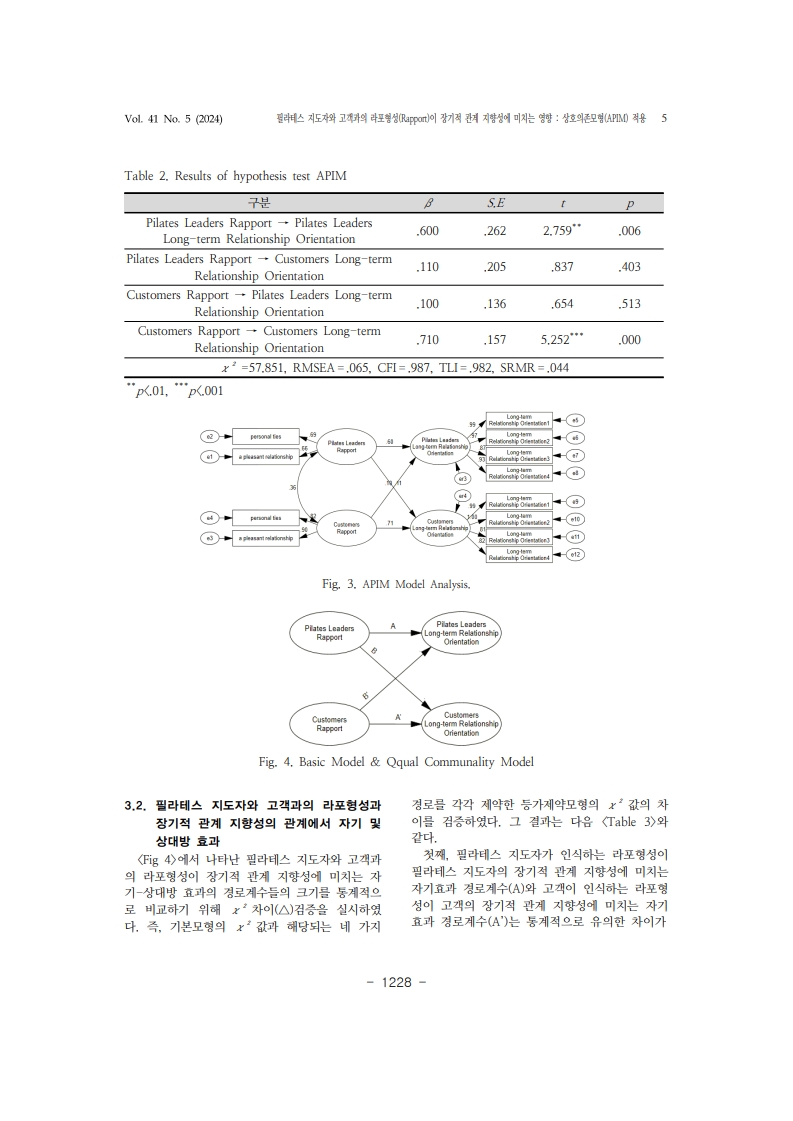
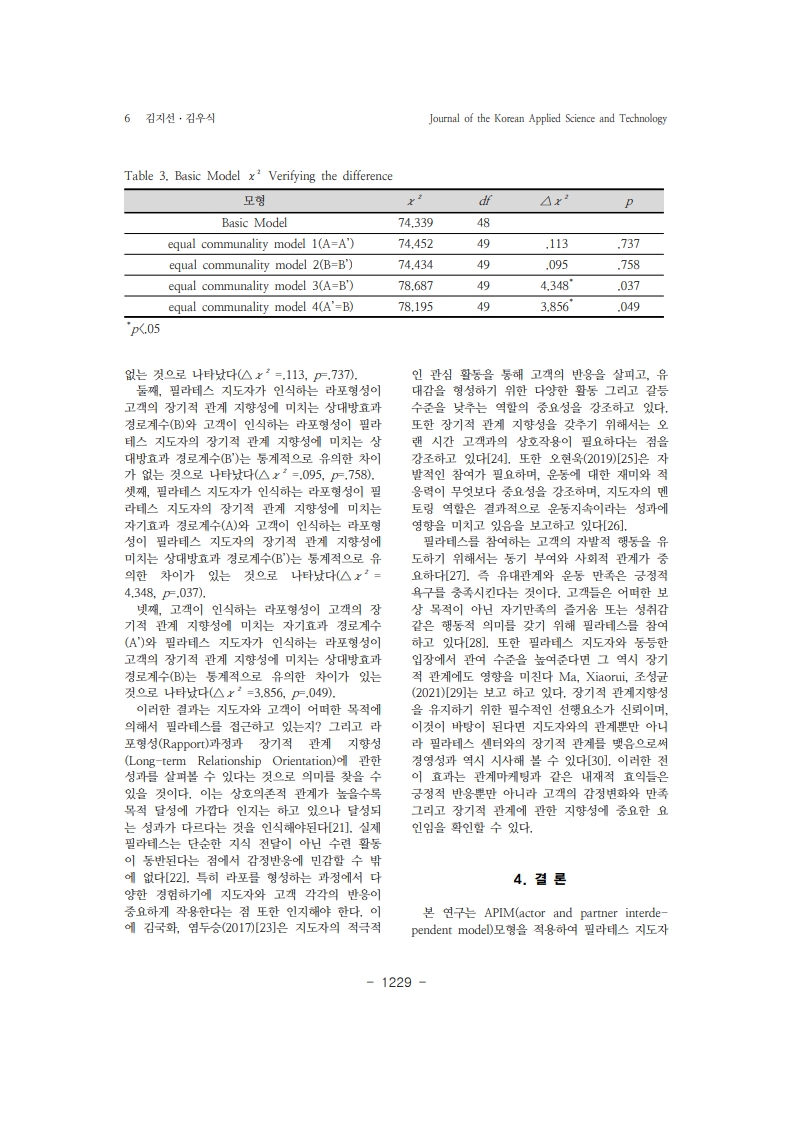
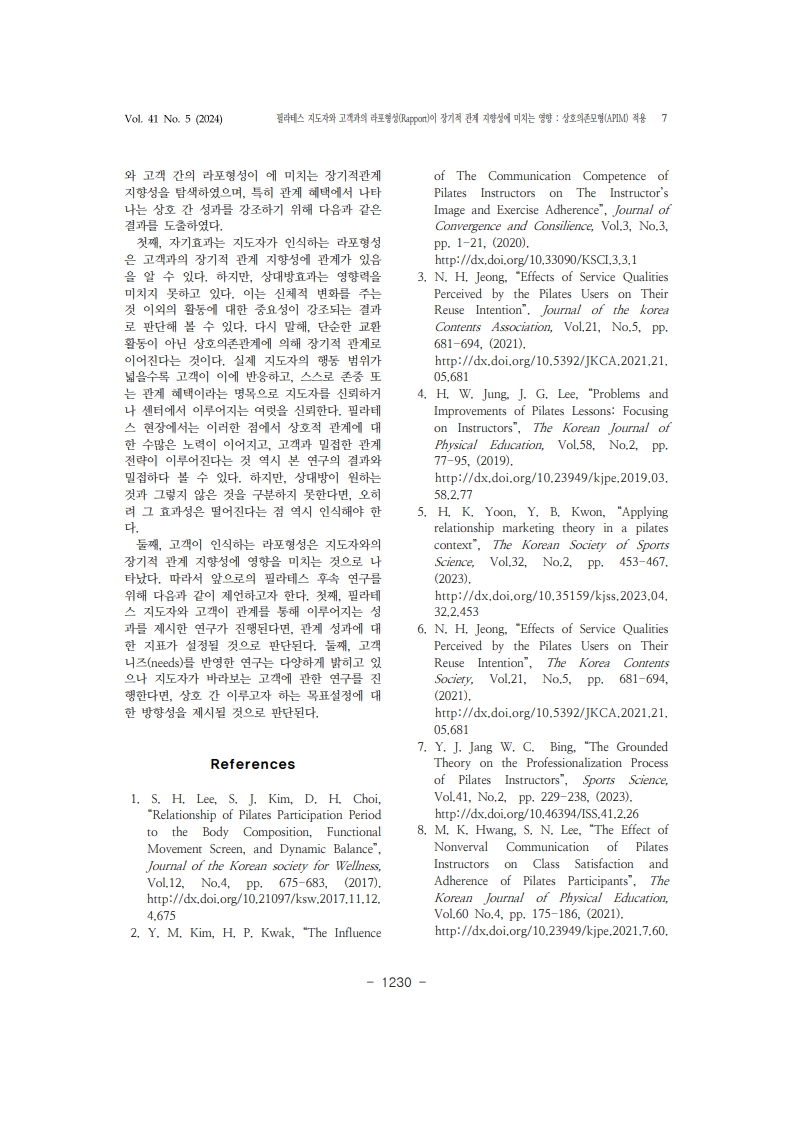
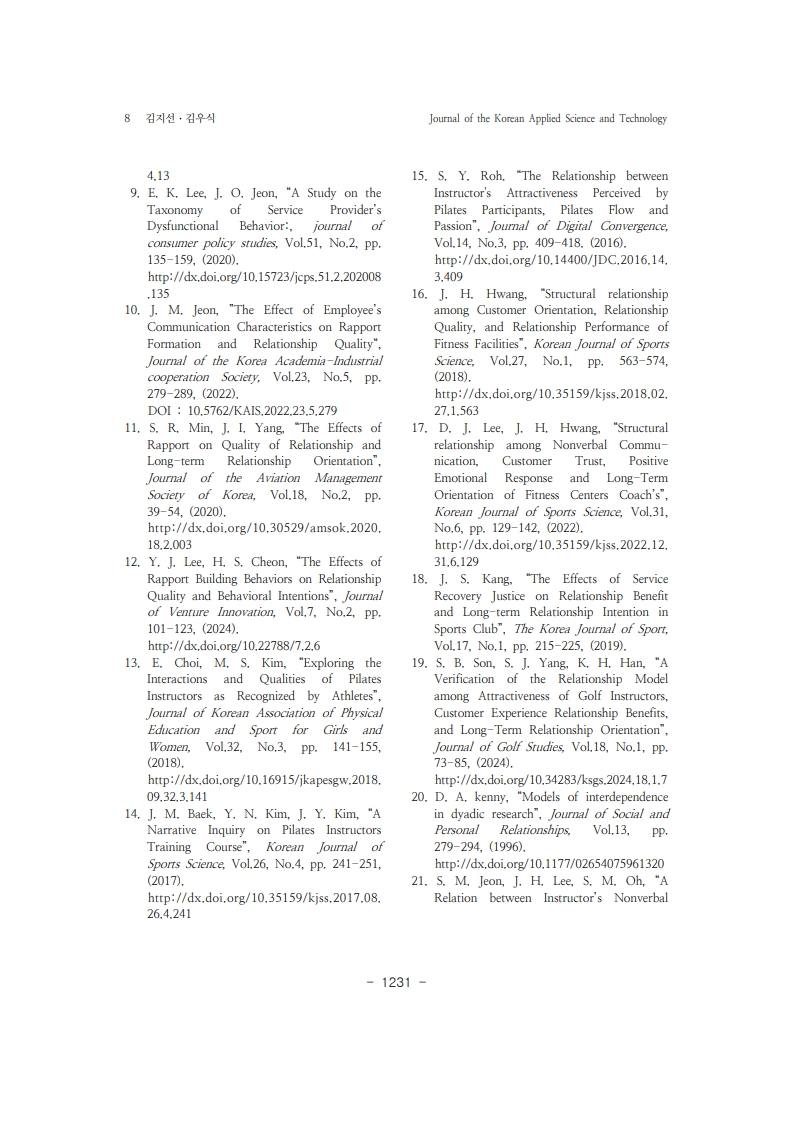
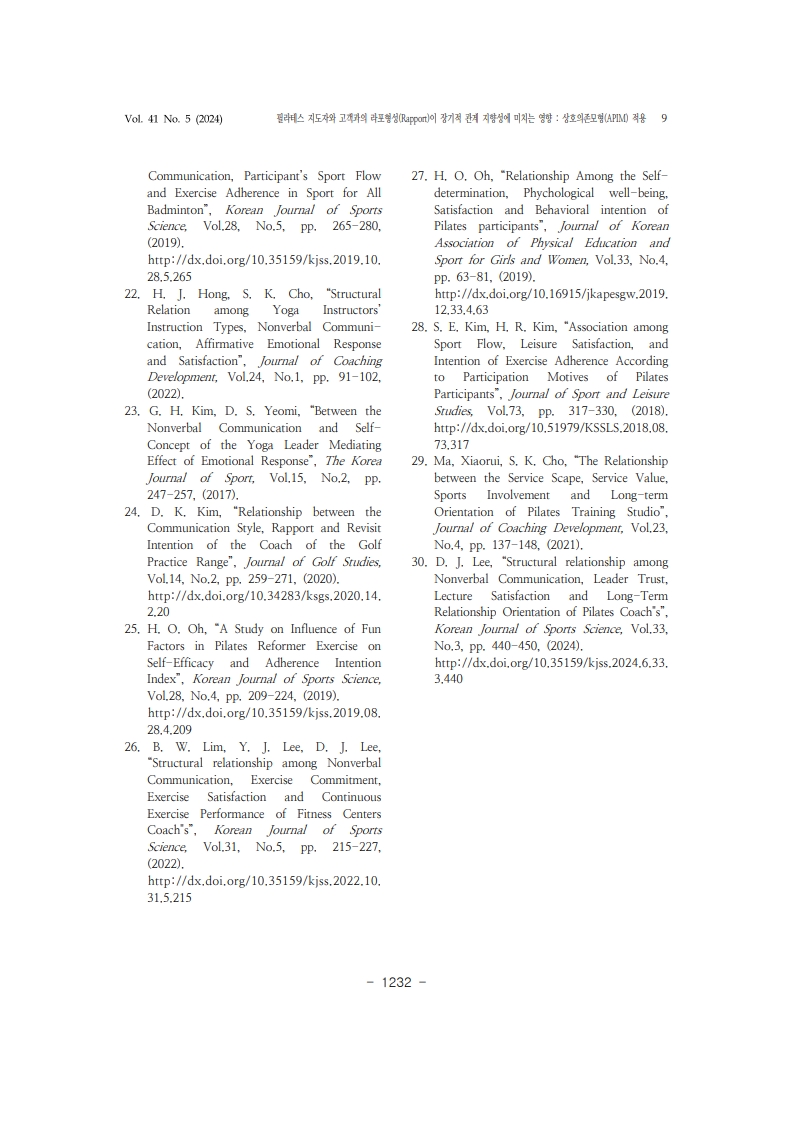
1. S. H. Lee, S. J. Kim, D. H. Choi, “Relationship of Pilates Participation Period to the Body Composition, Functional Movement Screen, and Dynamic Balance”, Journal of the Korean society for Wellness, Vol.12, No.4, pp. 675-683, (2017). http://dx.doi.org/10.21097/ksw.2017.11.12.4.675
2. Y. M. Kim, H. P. Kwak, “The Influence of The Communication Competence of Pilates Instructors on The Instructor’s Image and Exercise Adherence”, Journal of Convergence and Consilience, Vol.3, No.3, pp. 1-21, (2020). http://dx.doi.org/10.33090/KSCI.3.3.1
3. N. H. Jeong, “Effects of Service Qualities Perceived by the Pilates Users on Their Reuse Intention”. Journal of the korea Contents Association, Vol.21, No.5, pp. 681-694, (2021). http://dx.doi.org/10.5392/JKCA.2021.21.05.681
4. H. W. Jung, J. G. Lee, “Problems and Improvements of Pilates Lessons: Focusing on Instructors”, The Korean Journal of Physical Education, Vol.58, No.2, pp. 77-95, (2019). http://dx.doi.org/10.23949/kjpe.2019.03.58.2.77
5. H. K. Yoon, Y. B. Kwon, “Applying relationship marketing theory in a pilates context”, The Korean Society of Sports Science, Vol.32, No.2, pp. 453-467. (2023). http://dx.doi.org/10.35159/kjss.2023.04.32.2.453
6. N. H. Jeong, “Effects of Service Qualities Perceived by the Pilates Users on Their Reuse Intention”, The Korea Contents Society, Vol.21, No.5, pp. 681-694, (2021). http://dx.doi.org/10.5392/JKCA.2021.21.05.681
7. Y. J. Jang W. C. Bing, “The Grounded Theory on the Professionalization Process of Pilates Instructors”, Sports Science, Vol.41, No.2, pp. 229-238, (2023). http://dx.doi.org/10.46394/ISS.41.2.26
8. M. K. Hwang, S. N. Lee, “The Effect of Nonverval Communication of Pilates Instructors on Class Satisfaction and Adherence of Pilates Participants”, The Korean Journal of Physical Education, Vol.60 No.4, pp. 175-186, (2021). http://dx.doi.org/10.23949/kjpe.2021.7.60.4.13
9. E. K. Lee, J. O. Jeon, “A Study on the Taxonomy of Service Provider’s Dysfunctional Behavior:, journal of consumer policy studies, Vol.51, No.2, pp. 135-159, (2020). http://dx.doi.org/10.15723/jcps.51.2.202008.135
10. J. M. Jeon, ”The Effect of Employee’s Communication Characteristics on Rapport Formation and Relationship Quality“, Journal of the Korea Academia-Industrial cooperation Society, Vol.23, No.5, pp. 279-289, (2022). DOI : 10.5762/KAIS.2022.23.5.279
11. S. R. Min, J. I. Yang, “The Effects of Rapport on Quality of Relationship and Long-term Relationship Orientation”, Journal of the Aviation Management Society of Korea, Vol.18, No.2, pp. 39-54, (2020). http://dx.doi.org/10.30529/amsok.2020.18.2.003
12. Y. J. Lee, H. S. Cheon, “The Effects of Rapport Building Behaviors on Relationship Quality and Behavioral Intentions”, Journal of Venture Innovation, Vol.7, No.2, pp. 101-123, (2024). http://dx.doi.org/10.22788/7.2.6
13. E. Choi, M. S. Kim, “Exploring the Interactions and Qualities of Pilates Instructors as Recognized by Athletes”, Journal of Korean Association of Physical Education and Sport for Girls and Women, Vol.32, No.3, pp. 141-155, (2018). http://dx.doi.org/10.16915/jkapesgw.2018.09.32.3.141
14. J. M. Baek, Y. N. Kim, J. Y. Kim, “A Narrative Inquiry on Pilates Instructors Training Course”, Korean Journal of Sports Science, Vol.26, No.4, pp. 241-251, (2017). http://dx.doi.org/10.35159/kjss.2017.08.26.4.241
15. S. Y. Roh. “The Relationship between Instructor's Attractiveness Perceived by Pilates Participants, Pilates Flow and Passion”, Journal of Digital Convergence, Vol.14, No.3, pp. 409-418. (2016). http://dx.doi.org/10.14400/JDC.2016.14.3.409
16. J. H. Hwang, “Structural relationship among Customer Orientation, Relationship Quality, and Relationship Performance of Fitness Facilities”, Korean Journal of Sports Science, Vol.27, No.1, pp. 563-574, (2018).
http://dx.doi.org/10.35159/kjss.2018.02.27.1.563
17. D. J. Lee, J. H. Hwang, “Structural relationship among Nonverbal Commu- nication, Customer Trust, Positive Emotional Response and Long-Term Orientation of Fitness Centers Coach’s”, Korean Journal of Sports Science, Vol.31, No.6, pp. 129-142, (2022). http://dx.doi.org/10.35159/kjss.2022.12.31.6.129
18. J. S. Kang, “The Effects of Service Recovery Justice on Relationship Benefit and Long-term Relationship Intention in Sports Club”, The Korea Journal of Sport, Vol.17, No.1, pp. 215-225, (2019).
19. S. B. Son, S. J. Yang, K. H. Han, “A Verification of the Relationship Model among Attractiveness of Golf Instructors, Customer Experience Relationship Benefits, and Long-Term Relationship Orientation”, Journal of Golf Studies, Vol.18, No.1, pp. 73-85, (2024). http://dx.doi.org/10.34283/ksgs.2024.18.1.7
20. D. A. kenny, “Models of interdependence in dyadic research”, Journal of Social and Personal Relationships, Vol.13, pp. 279-294, (1996). http://dx.doi.org/10.1177/02654075961320
21. S. M. Jeon, J. H. Lee, S. M. Oh, “A Relation between Instructor’s Nonverbal Communication, Participant’s Sport Flow and Exercise Adherence in Sport for All Badminton”, Korean Journal of Sports Science, Vol.28, No.5, pp. 265-280, (2019). http://dx.doi.org/10.35159/kjss.2019.10.28.5.265
22. H. J. Hong, S. K. Cho, “Structural Relation among Yoga Instructors’ Instruction Types, Nonverbal Communi- cation, Affirmative Emotional Response and Satisfaction”, Journal of Coaching Development, Vol.24, No.1, pp. 91-102, (2022).
23. G. H. Kim, D. S. Yeomi, “Between the Nonverbal Communication and Self- Concept of the Yoga Leader Mediating Effect of Emotional Response”, The Korea Journal of Sport, Vol.15, No.2, pp. 247-257, (2017).
24. D. K. Kim, “Relationship between the Communication Style, Rapport and Revisit Intention of the Coach of the Golf Practice Range”, Journal of Golf Studies, Vol.14, No.2, pp. 259-271, (2020). http://dx.doi.org/10.34283/ksgs.2020.14.2.20
25. H. O. Oh, “A Study on Influence of Fun Factors in Pilates Reformer Exercise on Self-Efficacy and Adherence Intention Index”, Korean Journal of Sports Science, Vol.28, No.4, pp. 209-224, (2019). http://dx.doi.org/10.35159/kjss.2019.08.28.4.209
26. B. W. Lim, Y. J. Lee, D. J. Lee, “Structural relationship among Nonverbal Communication, Exercise Commitment, Exercise Satisfaction and Continuous Exercise Performance of Fitness Centers Coach"s”, Korean Journal of Sports Science, (2022). Vol.31, No.5, pp. 215-227, http://dx.doi.org/10.35159/kjss.2022.10.31.5.215
27. H. O. Oh, “Relationship Among the Self- determination, Phychological well-being, Satisfaction and Behavioral intention of Pilates participants”, Journal of Korean Association of Physical Education and Sport for Girls and Women, Vol.33, No.4, pp. 63-81, (2019). http://dx.doi.org/10.16915/jkapesgw.2019.12.33.4.63
28. S. E. Kim, H. R. Kim, “Association among Sport Flow, Leisure Satisfaction, and Intention of Exercise Adherence According to Participation Motives of Pilates Participants”, Journal of Sport and Leisure Studies, Vol.73, pp. 317-330, (2018). http://dx.doi.org/10.51979/KSSLS.2018.08.73.317
29. Ma, Xiaorui, S. K. Cho, “The Relationship between the Service Scape, Service Value, Sports Involvement and Long-term Orientation of Pilates Training Studio”, Journal of Coaching Development, Vol.23, No.4, pp. 137-148, (2021).
30. D. J. Lee, “Structural relationship among Nonverbal Communication, Leader Trust, Lecture Satisfaction and Long-Term Relationship Orientation of Pilates Coach"s”, Korean Journal of Sports Science, Vol.33, No.3, pp. 440-450, (2024). http://dx.doi.org/10.35159/kjss.2024.6.33.3.440
